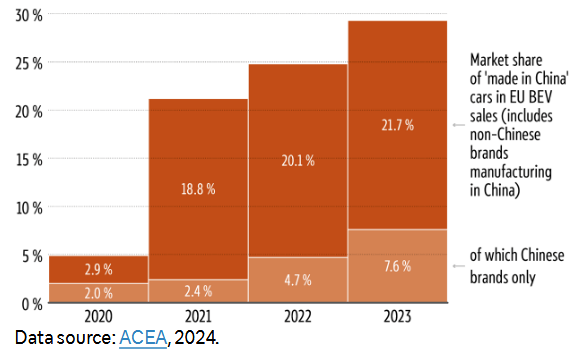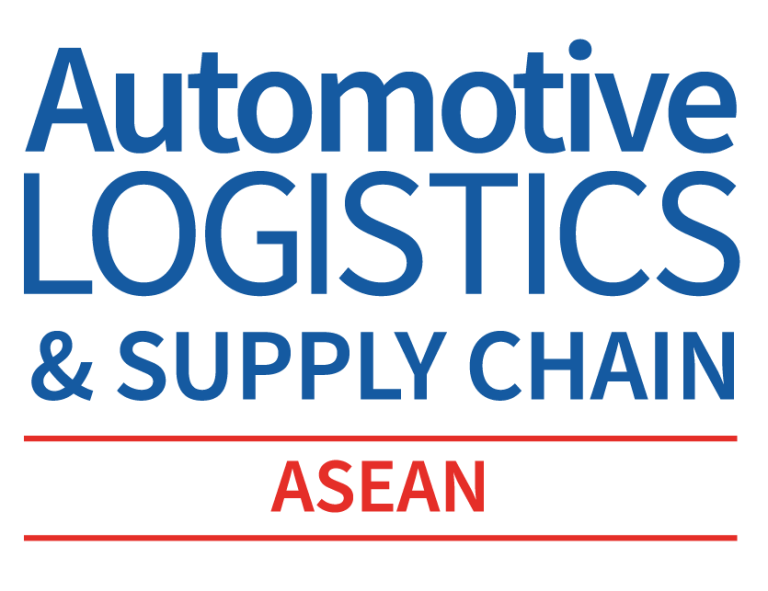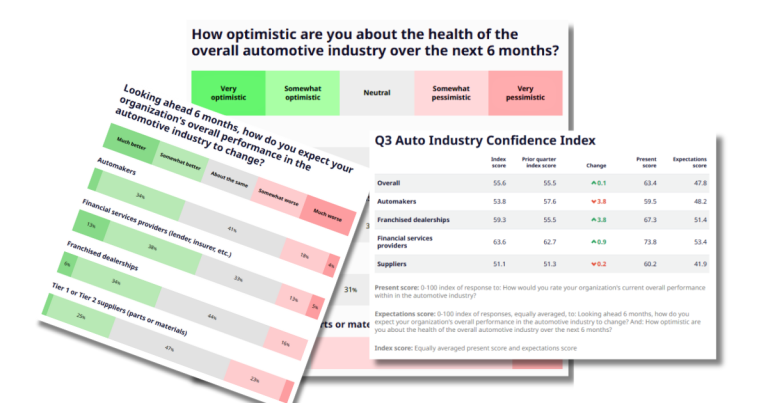Chinese Auto Growth Reshapes European Markets

Unpacking the Digital Front Door: Cookies, Data, and Online User Experience
The modern business website is more than just a digital brochure—it’s a high‐tech portal where data and cookies pave the way for a personalized user journey. Many companies, including journals and data providers, now rely on data-gathering techniques to provide tailored content, measure engagement, and fine-tune the digital experience. Yet as small businesses and industry giants alike invest in digital transformation, it becomes important to take a closer look at the tricky parts of data collection and privacy.
Users are often met with notifications about cookies that serve as a reminder that every click and scroll contributes to a more refined experience. However, if you decline them or take no action, apart from those absolutely essential for running the service, your data is largely left untouched. This choice is both empowering and a source of tension for digital users—especially when comparing the promise of innovation with concerns about privacy.
While the concept may seem simple on the surface, there are tangled issues behind the scenes. The balance between personalization and privacy is a complicated piece of modern education for businesses, showing that every tech decision comes with its own twists and turns and a need to handle these fine points with care.
Chinese Automotive Brands: Reshaping the European Landscape
Over the past five years, Chinese automotive brands have been making a noticeable move in the European market, a market long dominated by established domestic and legacy manufacturers. Chinese OEMs have rapidly expanded their influence with innovative business models, diverse product strategies, and increasingly localised operations. This evolution is not only a point of discussion for automotive experts but also a strategic pivot that businesses across industries are watching closely.
Using detailed market reports and registration data, experts have tracked this market disruption — revealing that brands like BYD, MG, and Geely are challenging the well-known names such as Volkswagen and Mercedes. The progress is measured not just in volume but also in the innovative strategies these companies have employed to capture market share, steer through regulatory landscapes, and adjust their offerings according to the subtle details of local consumer preferences.
Analyzing Market Entry Strategies in a Competitive Environment
The entry of Chinese brands into Europe has not been a hasty sprint; it’s more akin to a well-choreographed relay race through various countries. The approach these brands take is often selective: choosing strategic markets for initial launches and then building on early successes. For industry stakeholders, it is critical to get into the nitty-gritty of market entry strategies, understanding not only the order and timing of rollouts but also the reasoning behind these choices.
Consider the following factors that contribute to a winning market entry strategy:
- Initial Launch Countries: Brands often begin with nations that have a receptive regulatory environment, helping them build their credibility.
- Timeline of Expansion: A measured rollout can help brands adapt without overwhelming local markets.
- Localisation Efforts: Investing in local operations, such as research and design centres in strategic regions, signals long-term commitment and builds trust among European customers.
This tactical approach allows Chinese brands to not only stick their landing on a new continent but also to build a resilient commercial footprint characterized by a mix of imported expertise and localized production.
Dealer Network Structures: Finding Your Path in a Competitive Retail Environment
One of the tricky parts for automotive brands expanding into new territories is figuring out how to build effective dealer networks. The choice of distribution model is a key decision that affects everything from pricing to customer relations. The strategies vary, with some brands opting for a fully integrated model where the manufacturer controls every retail aspect, while others rely on agent or importer approaches.
To break it down, here are a few common distribution models used in Europe:
- OEM-Owned Dealerships: Following in Tesla’s footsteps, some Chinese brands are opening their own stores to control the customer journey from start to finish.
- Agency Models: Here, the manufacturer retains ownership until the point of sale, allowing for a consistent pricing strategy while giving dealers a fixed commission to guide the sales process.
- Traditional Dealer Networks: These involve partnerships with established local dealers who take on both operational and financial responsibilities.
- Importer-Led Structures: By delegating responsibilities to local partners, brands can benefit from local expertise and a ready-made retail infrastructure.
Each method presents its own set of confusing bits and local challenges, making it essential for brands to take a closer look at the small distinctions between these distribution approaches. Ultimately, the chosen model needs to harmonize brand messaging with customer expectations and regulatory demands.
Local Operations and European Presence: A Commitment Beyond Exports
Building a European footprint requires more than just shipping in vehicles; it demands establishing local hubs and operational centres. Chinese brands have begun to make symbolic investments by setting up headquarters, research centres, and even manufacturing facilities. Assessing these moves is key to understanding the deeper commitment that these companies have towards the region.
Local entities do three things:
- Signal Commitment: Creating a physical presence in Europe shows potential customers and regulators that the brand is here for the long haul.
- Enhance Responsiveness: Local operations allow companies to respond faster to market changes, customer feedback, and regulatory shifts.
- Foster Innovation: Proximity to a diverse pool of talent and technological expertise bolsters research and product adaptation efforts in line with European standards.
When you factor in the evolving attitudes towards electrification and sustainability, the move to integrate more deeply into local markets is not just a commercial tactic—it’s a necessity in a region where consumer expectations can differ widely from those in China.
Strategic Product Line-Ups and Powertrain Portfolios
The product range of Chinese OEMs in Europe is also receiving a thorough reappraisal. With consumers increasingly turning their attention to electric vehicles (EVs) and hybrid models, it becomes essential for brands to adjust their product portfolios to meet regional preferences and regulatory requirements.
Market research has shown that while some traditional markets still favour internal combustion engines, the push towards greener energy is undeniable. The powertrain mix in European offerings now encompasses everything from internal combustion engine (ICE) models to mild hybrids (MHEV), hybrids (HEV), plug-in hybrids (PHEV), extended-range electric vehicles (EREV), and pure battery electric vehicles (BEV).
Understanding the Shift to Alternative Powertrains
The drive towards cleaner energy and reduced emissions has forced automotive brands to rethink their product strategies. The fine points of this transition include:
- Regulatory Influences: Stricter emissions guidelines in nations like France and the UK are a strong driver for offering a broader range of green vehicles.
- Consumer Preferences: Modern European buyers are increasingly drawn towards vehicles that reflect sustainability without sacrificing performance or advanced technology features.
- Competitive Pricing: With a price-sensitive environment in many European markets, the challenge lies in offering competitive electric models without cutting corners on innovation or reliability.
By mixing a variety of powertrains in their portfolios, Chinese brands are not only diversifying their market risk—they are also positioning themselves to match the evolving demands of a continent in the midst of an electrification revolution. The strategic challenge is to continue offering attractive value propositions while managing the overheads and risks related to regulatory compliance and technological upgrades.
Evaluating Product Positioning: Standard Equipment Versus Price Expectations
Another key twist in the market space relates to product positioning—specifically, how Chinese brands balance the content of standard equipment with competitive pricing. Industry experts use tools such as product indexes which compare the richness of vehicle specifications against the segment average, and price indexes which provide benchmarks for value-for-money.
The detailed examination of specific models in major markets such as Germany, Great Britain, France, Italy, and Spain has revealed some interesting trends. For instance, models that emerge as leaders often offer a combination of rich features and a price point that undercuts more established brands. In many cases, these vehicles provide extensive standard equipment without the nerve-racking premium of legacy brands, making them super important contenders for price-sensitive buyers looking for modern technology and smart design.
Through comprehensive product analysis tools and consumer research, brands are able to fine-tune their approaches, ensuring that the proposition they offer aligns well with the fine shades of consumer expectation. This attention to detail in model positioning underlines the need for continuous monitoring of both the product index and price benchmarks.
Challenges and Opportunities in the European Automotive Market
The entry of Chinese automotive players into Europe offers a host of opportunities, but it is not without its particular set of challenges. For manufacturers accustomed to the regulatory environment and consumer expectations of their home market, stepping into Europe can be both exciting and nerve-racking.
Some of the overwhelming elements in this journey include:
- Regulatory Hurdles: Each European country comes with its own set of rules and standards, which can be tangled issues for brands used to a more uniform market back home.
- Consumer Trust: Building trust in a market with a strong loyalty to domestic manufacturers is a significant challenge that requires genuine local engagement.
- Distribution Complexity: As highlighted earlier, establishing effective dealer networks and consistent service frameworks demands a well-thought-out strategy and significant local knowledge.
Despite these hurdles, Chinese brands have managed to carve out a niche and gradually increase their market share. Their success stories range from rapid volume gains among pure EV brands in progressive markets like Norway to strategic partnerships in places like Poland, where competitive pricing has opened the door for affordable hybrids and electrified options.
How Policy and Subsidies Impact Market Dynamics
The role of government policy in shaping the automotive landscape cannot be overstated. For countries like France and Italy, where stringent environmental scoring and adjusted incentive schemes prevail, manufacturers must adapt their strategies to align with local regulations. At the same time, regions with progressive policy measures—such as Norway—offer unique opportunities for brands that can effectively time their market entry with upcoming infrastructure investments and supportive subsidies.
Below is a comparative look at how different countries are responding to the evolving powertrain mix:
| Country | Regulatory Environment | Market Opportunity | Challenges |
|---|---|---|---|
| Germany | High regulatory standards with a strong domestic presence | Steady demand for innovation in EV technologies | Competition with legacy brands |
| France | Stringent environmental scoring and subsidy adjustments | Encouraging local production facilities for international brands | Limited penetration due to high standards |
| Norway | Leader in BEV adoption with supportive infrastructure | High market share for electric vehicles | Market saturation and fierce competition in the electric segment |
| Italy | Price-sensitive with emerging subsidy packages | Opportunities in affordable models across powertrains | Slow BEV adoption and fragmented market demands |
This table illustrates not only the opportunities that await the strategic players but also highlights the distinct challenges that each national context brings to the table. For Chinese automotive brands, the road ahead is loaded with issues that require both strategic finesse and robust local partnerships.
Marketing Strategy and Consumer Outreach in a Hyper-Competitive Era
In an age where digital marketing and customer outreach are critical, Chinese brands have had to rethink their approach to connecting with European buyers. The marketing strategy is often viewed as the core of the competitive edge—and here, the subtle details of digital presence, influencer engagement, and personalised content come into focus.
While traditional advertising methods remain relevant, modern consumer outreach relies heavily on digital channels such as webinars, podcasts, and data-driven approaches. In many ways, the online ecosystem mirrors the broader digital transformation seen across business sectors:
- Content Personalisation: Utilizing cookies and data, companies can serve content that appeals directly to individual preferences. This strategy, however, means they must also manage the balancing act between customisation and consumer privacy.
- Multichannel Campaigns: From social media engagement to targeted email newsletters, the campaigns are designed to capture diverse audience segments with varying interests and spending powers.
- Data Analysis: Much like its application in the automotive market, leveraging registration data, buyer insights, and product feedback allows for real-time adjustments in marketing tactics, ensuring that every euro spent on outreach is backed by rigorous analysis.
By diving into these avenues, automotive brands are able to both build anticipation for new launches and address any off-putting perceptions that may exist due to their foreign origins. This marketing mix is not without its complications—but its success depends on a continuous process of evaluation and adaptation.
Digital Lead Generation and the Role of Subscriptions
An interesting trend in today’s data-driven market is the emphasis on lead generation via digital subscriptions—ranging from monthly newsletters to specialized report series. For instance, many industry experts now subscribe to detailed analytical reports that break down market trends, technological advances, and regulatory changes in near real-time.
Using subscription forms on websites, companies not only capture valuable data but also nurture a community of informed readers who are keen to stay ahead of the curve. This approach is particularly effective in an industry where the small distinctions in product positioning can influence purchasing decisions dramatically. In turn, it helps brands build credibility and foster long-term engagement with a highly targeted audience.
It’s a strategy that mirrors the detailed cogitation seen in market analysis reports—where every bit of information, every subtle twist in consumer sentiment, is tracked and turned into actionable insights that inform both current and future endeavors.
Lessons from JATO Advisory: Expert Insights for Industry Stakeholders
Reports from consultancy firms such as JATO Advisory bring an essential perspective to how industry players can succeed in these new dynamics. Their analytical approach covers not just surface-level trends but digs into the nitty-gritty of dealer networks, product line-ups, and the unique marketing challenges that come with entering a diverse market like Europe.
Senior Consultants at advisory firms emphasize several core lessons:
- Detailed Analysis is a Must: Whether it is about understanding distribution models or getting into the fine points of product positioning, an exhaustive approach helps in identifying both the opportunities and the stand-out challenges.
- Strategic Patience Pays Off: Rapid market entry without proper localization or channel development can lead to off-putting complications in the long run.
- Adaptability is Key: The ability to adjust strategies quickly in response to regulatory changes, consumer behavior shifts, or even unexpected global events is critical.
By taking a measured, data-driven approach, businesses can not only manage the tangled issues of market entry but also turn these challenges into competitive advantages. This is a strategy that works just as effectively whether you are a groundbreaking start-up or an established manufacturer looking to tap into new market segments.
Tailoring Strategies for Different European Markets
Europe is not a monolithic market; its regional variations require that companies tailor their strategies for each specific country. Chinese automotive brands, for example, have seen varying levels of success depending on their ability to match their offerings to local tastes, income levels, and environmental goals.
Some important considerations include:
- Market Segmentation: In countries like Germany and Norway, the emphasis on high-tech features and sustainability means that a premium positioning is essential. In contrast, price-sensitive markets like Italy might benefit from affordable yet reliable offerings.
- Consumer Behavior: Understanding the subtle details of buying preferences—whether that’s a predilection towards BEVs or flexible financing options—can make all the difference in whether a brand is perceived as a serious competitor or just a fleeting novelty.
- Policy Landscape: Differences in government policies, such as subsidy programs, environmental standards, and dealer incentives, demand that brands are ready to figure a path through fluctuating regulatory terrain.
Mapping out a comprehensive local strategy not only involves practical aspects like establishing local offices and service centres but also a deep dive into consumer cultural trends. This sort of localized approach is key to gaining traction and sustaining momentum in an increasingly competitive market.
Looking Forward: The Future of Chinese Brands in Europe
Although the rapid expansion of Chinese automotive brands in Europe is a hot topic today, the journey has just begun. As these companies continue to refine their approaches, the coming years are set to be full of opportunities—and yes, even a few nerve-racking decisions.
The future holds several trends to watch closely:
- Increased Local Production: With several brands already setting up local manufacturing and R&D centres, a shift from export-led operations to integrated European production will likely become the norm.
- Technological Innovations: Advanced mobility solutions, including connected vehicles and autonomous driving, are expected to shape the design and consumer expectations, leading to a faster uptake of innovation-driven models.
- Sustainable Mobility Solutions: As sustainability becomes a must-have policy and consumer requirement, the continued evolution of hybrid and electric powertrains will be core to product development.
- Refined Distribution Networks: Expect more brands to experiment with varied dealership models, finding creative ways to combine online and offline retail strategies that resonate well with local buyers.
Each of these trends comes with its own set of confusing bits and challenging twists. Yet, they also provide ample opportunities for businesses willing to invest in long-term strategic thinking powered by data. The full-on transformation that Chinese brands are driving in Europe sets a compelling example of how diverse strategies, aligned with local market needs, can reshape an entire industry.
Setting a New Benchmark in Automotive Excellence
The shift in the European automotive market is more than just a change in product offerings—it is a redefinition of market dynamics, consumer expectations, and competitive strategies. In many ways, the narrative of Chinese automotive brands in Europe is one of transformation and adaptation. By meticulously addressing the tricky parts of market entry, dealer network development, and localized marketing strategies, these brands are setting new benchmarks for the industry.
As older models of business operation give way to a new era defined by innovation and responsiveness, the overall ecosystem becomes richer, more diverse, and more competitive. For other industries observing this trend, there is a clear lesson: understanding and addressing both the subtle parts and the big picture is essential for navigating a rapidly changing landscape.
Closing Thoughts: Strategic Adaptation in a Changing World
The digital age demands that businesses stay ahead by continuously adapting to the market’s hidden complexities. From ensuring a seamless website experience with data cookies to managing localized product portfolios and distribution models, the journey of businesses—especially those venturing into new markets—is a composite of strategic choices, practical decisions, and continuous learning.
For Chinese automotive brands stepping into the European arena, each phase of their expansion represents a mix of opportunities and challenges. Their success is largely driven by the ability to take a closer look at every fine detail—from market entry strategies and dealer network decisions to the pricing and positioning of vehicles. Industry analysts and advisory firms remind us that this process is filled with both opportunities and off-putting complications, and that understanding the little twists is central to sustained market success.
Moving forward, the key for many companies will be to embrace the advanced tools of data gathering and targeted marketing while remaining true to their core values. In an environment where each small adjustment to strategy can lead to significant competitive advantages, every business must be prepared to work through the tangled issues and find their way through the regulatory and consumer-based challenges.
Ultimately, the evolution of Chinese automotive brands in Europe is not just about selling vehicles—it is about setting a new paradigm in innovation, responsiveness, and localized expertise. As investors, market watchers, and business leaders continue to monitor these developments, the consensus is clear: adapting to these changes with agility and precision is not only desirable but also essential for future success.
In this era of digital transformation and market reorientation, companies that can take the wheel and steer through the mix of opportunities and challenges will likely emerge as leaders in their fields. Just as consumers now have the power to manage their digital footprint, businesses too must have the critical foresight to design strategies that resonate across borders, markets, and generations.
A Roadmap for Success in an Integrated Market
For small businesses, industrial manufacturers, automotive players, and even those involved in EV development, the roadmap for success in this interconnected marketplace includes several super important components:
- Robust Data-Driven Decision Making: Leveraging comprehensive market analyses to identify emerging opportunities while managing the twists and turns of regulatory standards.
- Consumer-Centric Product Development: Developing vehicles and services that cater to local tastes through detailed insights into the subtle parts of regional consumer behavior.
- Flexible Distribution Models: Experimenting with various dealer network structures that blend traditional retail successes with innovative online channels.
- Adaptive Marketing Strategies: Crafting campaigns that resonate deeply with a diverse audience, ensuring that every interaction builds trust and credibility.
- Long-Term Local Engagement: Investing in local infrastructure, research, and talent to cement a brand’s reputation as a committed and reliable player in the market.
These strategic pillars are essential not only for navigating the current market environment but also for building enduring brand equity in a competitive global landscape.
Embracing Change with Confidence
The journey ahead is full of both opportunities and challenging, nerve-racking decisions. With global competition intensifying and consumer preferences shifting at a rapid pace, it is clear that success will not come from maintaining the status quo. Instead, it will require businesses to be bold and adaptive—willing to learn from every market experiment and to continuously refine their strategies in the face of both predictable and unexpected twists.
The case of Chinese automotive brands in Europe highlights how innovative thinking, combined with a clear focus on localized engagement, can create lasting change in even the most established industries. As these brands continue to set new benchmarks, their experiences also serve as a reminder to all business leaders: the key to flourishing in today’s competitive environment lies in managing your way through the fine points of market dynamics, regulatory landscapes, and consumer behavior intricacies.
Final Reflections: The Strategic Edge in a Dynamic Marketplace
In conclusion, the evolving landscape—from the digital strategies that govern how we interact online to the transformative shifts in the automotive industry—demands nothing less than strategic adaptation and ongoing innovation. The careful balancing act between addressing consumer privacy in digital realms and redefining product and sales strategies in traditional manufacturing sectors encapsulates the multistage challenge businesses face today.
As we move forward, companies that embrace data, refine their local presence, and work through the complex pieces of market dynamics will have a distinct competitive advantage. The insights drawn from detailed analyses of Chinese automotive brands in Europe remind us that success is not merely about overcoming each obstacle but about strategically leveraging every available resource to build a robust, future-proof brand.
Now, more than ever, it is super important for business leaders across all sectors—from industrial manufacturing to electric vehicle innovation—to take a closer look at the strategies that have worked, learn from the subtle parts of market adaptation, and then apply these lessons to their own fields. The outcome is clear: those who are willing to get into the nitty-gritty and fine-tune every piece of their operations will not only find their pathway in a highly competitive environment but also set themselves on the course toward sustained, long-term success.
Ultimately, the story of Chinese brands in Europe serves as both a case study and a roadmap—one that illustrates the importance of evolving, adapting, and always finding your way through the intricate, ever-changing landscape of global business.
Originally Post From https://www.jato.com/beyond-the-brand-chinas-growing-auto-market-share-in-europe
Read more about this topic at
Action plan for the European automotive industry
Will a 15% U.S. Tariff on EU Autos Reshape Global Car …



